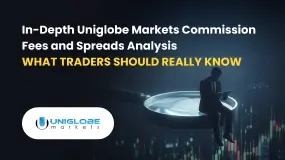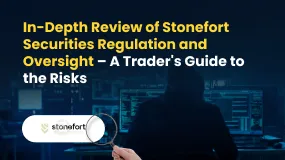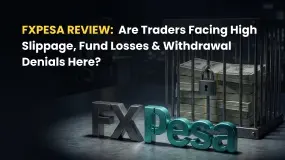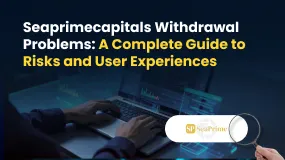简体中文
繁體中文
English
Pусский
日本語
ภาษาไทย
Tiếng Việt
Bahasa Indonesia
Español
हिन्दी
Filippiiniläinen
Français
Deutsch
Português
Türkçe
한국어
العربية
Companies will be driven to improve their digital offerings to protect market share.
Abstract:We have witnessed two developmental generations of the internet. Web 1.0 was all about browsing the web passively and ingesting content in read-only mode. Consumers became more active and participative as a result of Web 2.0 (where we are right now), as they began to contribute material to social media and connect and collaborate.

X.LA Foundation and the Arrival of Web 3.0
The Development of the Internet
The internet is undoubtedly the most significant technological development in human history. It has no boundaries and provides enormous economic opportunities for people in every country. People can use the internet to improve their quality of life. It gives people access to previously inaccessible things. With estimated billions of users, the internet is quickly becoming one of the most significant communication instruments.
X.LA Foundation and Web 3.0
The X.LA foundation is a community-driven organization created by Aleksandr “Shurick” Agapitov. Agapitov is the founder of Xsolla. Xsolla is a gaming industry forum that delivers value and possibilities for programmers, publishers, IP owners, and investors throughout the world. The X.LA Foundation has an objective in evolving traditional corporate partnerships and assisting people all over the world in becoming equal benefactors for their work, creations, and services through the use of novel Web 3.0 technologies and concepts.
“Creators are natural visionaries,” Agapitov said. “Now, as interest in NFTs, cryptocurrency and blockchain technologies grow, theyre seeing the opportunities in the Metaverse and X.LA is here to make that future a reality.”
On February 17th, 2022, the public witnessed the debut of the X.LA Foundation which will offer a range of its prospects to contractors, influencers, content creators, inventors, entrepreneurs, and academics. With the current interest in NFTs, bitcoin, and blockchain technology, the advent of this new project will bring the notions of Web 3.0 closer to becoming a reality. Its only logical for entrepreneurs and innovators to seize the chance to make their imprint on the rapidly evolving Web3.
In contrast; Web 1.0 came with scarce content creators accompanied by the majority of users who were merely consuming content. Web 2.0 brought people to the web as a medium, while Web 3.0 relates to a decentralized concept in which content creators can produce, control, trade, and be compensated for their work via NFTs, all while utilizing blockchain technology components. In a nutshell, minting NFTs is the process of creating a one-of-a-kind digital asset that can be traded alongside a token that serves as proof of ownership.
Some advantages (pros) of web 3.0
End-users will be able to reclaim entire ownership and control of their data while still benefiting from the protection of encryption. The ability to access data from any location is mostly driven by the widespread use of smartphones and Cloud applications. Blockchains, such as Ethereum, offer a secure environment where data is entirely secured and rules are unbreakable. Anyone can generate a blockchain address and use it to communicate with the network. Account suspensions and distribution service denials are drastically minimized.
Cons
Some cons that might likely accompany the advent of the web 3.0 can be seen as:
The inability for less advanced devices to access Web 3.0. Regulating would likely become a challenge. Some analysts believe that decentralization will make it more difficult to govern and manage Web 3.0. This could, among other things, lead to a rise in cybercrime and online abuse.
According to former Twitter CEO Jack Dorsey, ordinary people will not be the owners of Web 3.0 businesses, contrary to common opinion. He argues that it will be owned by venture investors and financiers. As a result, control might still be centralized. Existing website owners will be obliged to update their sites. As Web 3.0 apps and websites become more popular, incumbent companies will be driven to improve their digital offerings in order to protect market share.

Disclaimer:
The views in this article only represent the author's personal views, and do not constitute investment advice on this platform. This platform does not guarantee the accuracy, completeness and timeliness of the information in the article, and will not be liable for any loss caused by the use of or reliance on the information in the article.
Read more

In-Depth Uniglobe Markets Commission Fees and Spreads Analysis – What Traders Should Really Know
For experienced traders, the cost of execution is a critical factor in broker selection. Low spreads, fair commissions, and transparent pricing can be the difference between a profitable and a losing strategy over the long term. This has led many to scrutinize the offerings of brokers like Uniglobe Markets, which presents a tiered account structure promising competitive conditions. However, a professional evaluation demands more than a surface-level look at marketing claims. It requires a deep, data-driven analysis of the real trading costs, set against the backdrop of the broker's operational integrity and safety. This comprehensive Uniglobe Markets commission fees and spreads analysis will deconstruct the broker's pricing model, examining its account types, typical spreads, commission policies, and potential ancillary costs. Using data primarily sourced from the global broker inquiry platform WikiFX, we will provide a clear-eyed view of the Uniglobe Markets spreads commissions prici

In-Depth Review of Stonefort Securities Regulation and Oversight – A Trader's Guide to the Risks
For experienced traders, the process of selecting a new broker transcends a simple comparison of spreads and leverage. It is a meticulous due diligence exercise where the integrity of the broker's regulatory framework is paramount. Stonefort Securities, a relatively new entrant in the crowded brokerage space, presents a complex and often contradictory profile. On one hand, it boasts a modern MT5 platform and a stream of positive user testimonials. On the other hand, it is shadowed by severe regulatory warnings that question the very foundation of its operations. This in-depth review focuses on the core issue for any long-term trader: Stonefort Securities regulation and oversight. We will dissect the broker's corporate structure, scrutinize its licensing claims, and analyze what the data implies for trader protection and fund security. For traders evaluating whether Stonefort Securities is a trustworthy partner, understanding these details is not just important—it is essential.

FXPesa Review: Are Traders Facing High Slippage, Fund Losses & Withdrawal Denials?
Do FXPesa support officials fail to pick up your calls when you raise fund withdrawal requests with the broker? But are these officials always open to you regarding fund deposits? Do you frequently spot slippage and stop-loss order execution errors on the FXPesa login? These issues are increasingly becoming common with this forex broker. Consequently, many traders have expressed their dissatisfaction with the broker online. In this FXPesa Review article, we have shared some of these complaints. Take a look!

Seaprimecapitals Withdrawal Problems: A Complete Guide to Risks and User Experiences
Worries about Seaprimecapitals withdrawal problems and possible Seaprimecapitals withdrawal delay are important for any trader. Being able to get your money quickly and reliably is the foundation of trust between a trader and their broker. When questions come up about this basic process, it's important to look into what's causing them. This guide will tackle these concerns head-on, giving you a clear, fact-based look at Seaprimecapitals' withdrawal processes, user experiences, and trading conditions. Most importantly, we'll connect these real-world issues to the single most important factor behind them: whether the broker is properly regulated. Understanding this connection is key to figuring out the real risk to your capital and making a smart decision.
WikiFX Broker
Latest News
WikiFX's New Evaluation of ATM Capital LTD: Does its License Protect the Arab Investor?
How a Fake Moomoo Ad Led to the “New Dream Voyage 5” Scam
Is Axi Legit? A Data-Driven Analysis of Its Regulatory Standing and Trader Feedback
FXPesa Review: Are Traders Facing High Slippage, Fund Losses & Withdrawal Denials?
Trive Investigation: High Score, Hidden Risk - The Profit Paradox
In-Depth Uniglobe Markets Commission Fees and Spreads Analysis – What Traders Should Really Know
Bessent believes there won't be a recession in 2026 but says some sectors are challenged
Is GGCC Legit? A Data-Driven Analysis for Experienced Traders
Young Singaporean Trader Grew USD 52 into a USD 107,700 Portfolio
FreshForex (Latest) Review 2025 — Is FreshForex Legit?
Currency Calculator



